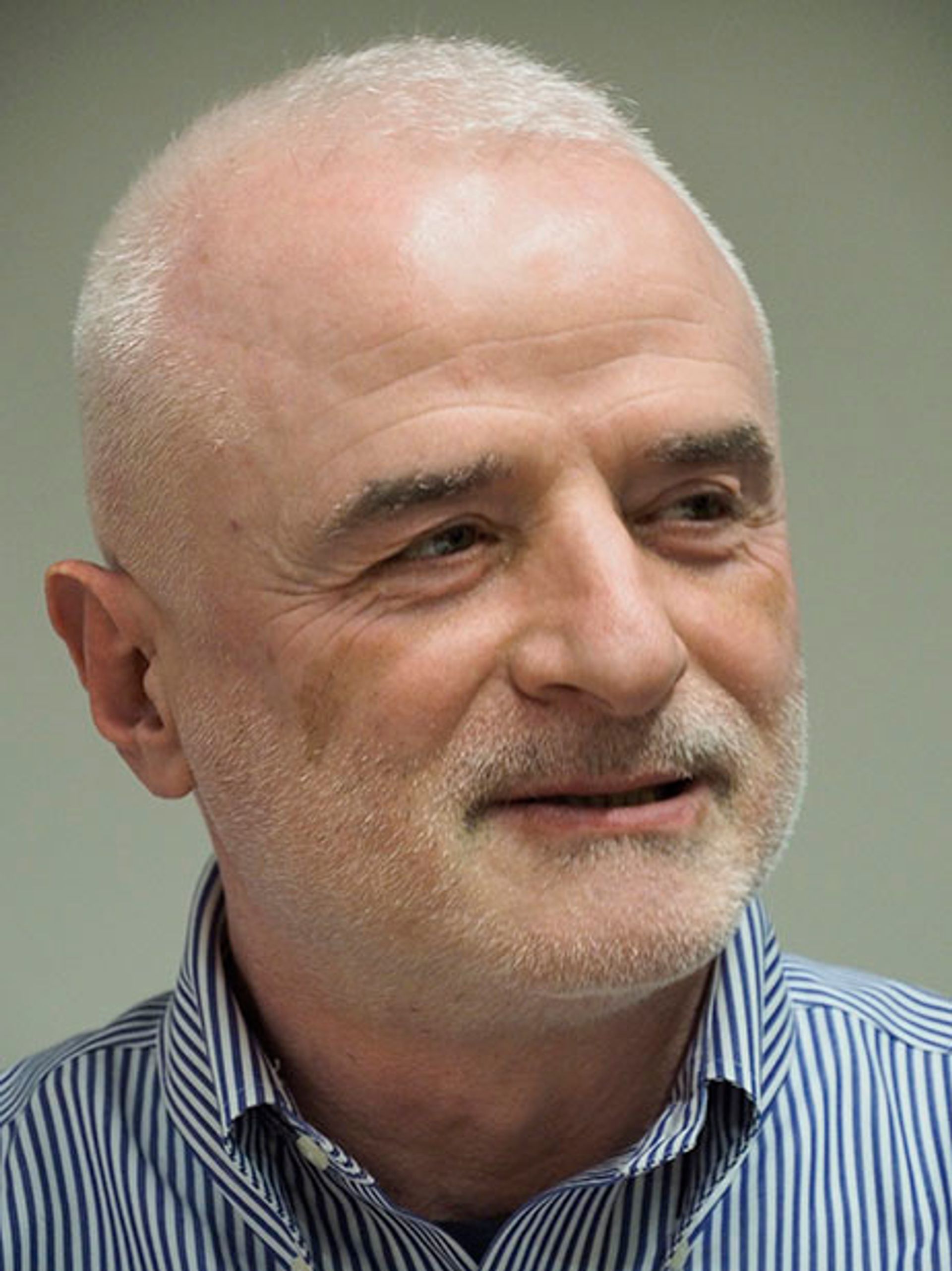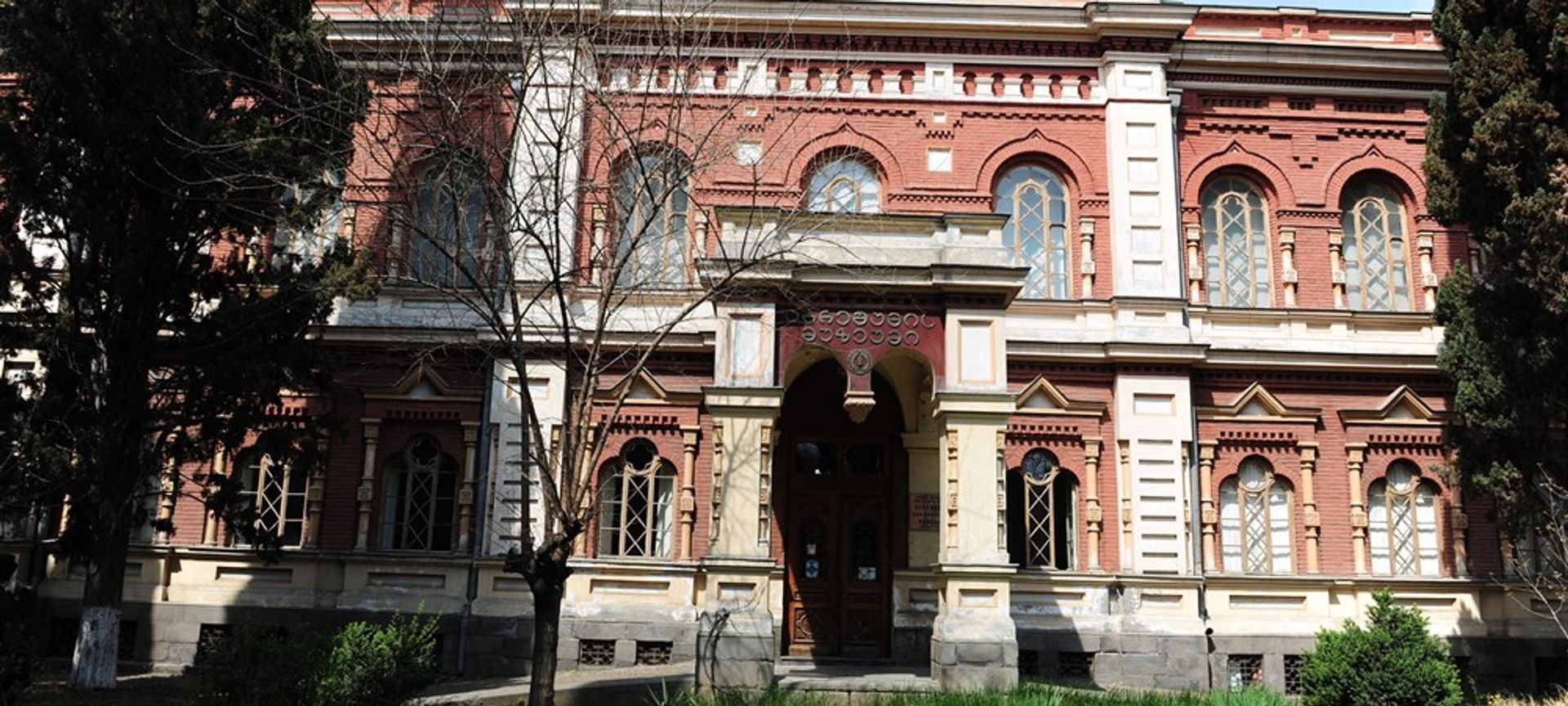When Sam Keller created Art Basel in Miami Beach in 2003, he roped in the whole community, its museums and collectors, and with that fair he singlehandedly put a place that had been famous only for sun, sea and retirees on the cultural map.
Six and a half thousand miles away, in the Southern Caucasus, a successful business man called Kaha Gvelesiani, has decided to do the same for his country, also by holding an art fair, which is opening its second edition on 17 May. Never mind that he has to explain to westerners that Georgia is not the state in the USA but the country in the Caucasus, sandwiched between Russia and Turkey, with Azerbaijan and Armenia as neighbours. Gvelesiani is a determined man, who has played a part in the recent history of his country—and paid for it.
He was one of the leaders in the civil war that tore apart Georgia after the dissolution of the Soviet Union. On 27 Sept 1991, he was lured to a parley with the other side, and as a sign of good faith, was asked to come unarmed. As he climbed the stairs, he was gunned down. In the morgue, “I lived again”, says Gvelesiani, but it has left him in a wheel chair, something he completely ignores. Rigorous self-discipline keeps him spare and strong, to the point that he travels on his own if he needs to. Even more remarkably, he holds no grudges, as though the civil war had just been just an inconvenient episode the country had to go through: “Now I have many friends among people who used to be on the other side”, he says.

From mechanical engineer to freedom fighter to art backer: Kaha Gvelesiani Courtesy of Anna Somers Cocks
He is proud of his country’s human potential. “Did you know that a lot of the engineers working on the Hadron collider in CERN (The European Organisation for Nuclear Research) are Georgians?”, he says. “Our economy is growing fast, and we have always been capable of sudden, explosive change, as in our rapid democratisation after the civil war.”
Georgia may have been out-of-mind for decades when it was part of the Soviet Union (its independence came in 1991), but it has a rugged ancient history, when it was a bulwark against Islam, and a sophisticated literary and musical history in the 19th century, when it was a southern playground for Russians.
Above all, it has what the leading art dealer, Thaddaeus Ropac—who introduced the now valuable art star Adrian Ghenie from the obscurity of Transylvania to the west—tells me he looks for when considering whether an “off-the-art map” country has potential: Georgia has an art academy.
It has hundreds of artists trained in rigorous, Soviet-style methods, and Gvelesiani believes that they have a chance of flowering once they have learnt how the rest of the art world works, the city has the galleries it needs, and Georgian art has opened up to the world.
First a mechanical engineer, then a property developer and co-founder of ExpoGeorgia, Gvelesiani has been methodical about building his fair, visiting all the major events, consulting with Sandy Angus, who started six art fairs across Asia, and employing Eric Schlosser as artistic director; Schlosser is French and knows his eastern Europe, having directed Art Moscow and Art Vilnius.
For his training in art, Kvelesiani has turned to his friend Tamara Kvesitadze, who represented Georgia at the Venice Biennale and is known for her huge kinetic sculptures (she is just finishing one in China). “To be honest”, he says, “I like art much more than the art scene—contemporary art, in particular, because its centre of gravity is thinking; it shows the spirit of the times, without boundaries. One of the motivations for me is that the art scene should express Georgian identity”, he adds, and he believes this to the extent that he has put his own money into a budget shared with the state and ExpoGeorgia. “I can boast that the first edition last year has already shaken up the Georgian art world: two new galleries and an art centre dedicated to experimental art have opened, and Salome Zourabichvili, the president of Georgia, is very keen to encourage the art trade by simplifying its laws.”
What will the visitor of the 2019 Tbilisi Art Fair find? Georgia’s neighbours, of course, with Azerbaijan particularly well represented by video artists and a gallery. Then there are Armenian, Russian, Ukrainian and Lithuanian galleries, and, from western Europe, Austrian, Belgian, Switzerland, Bulgaria, Serbia, France, Portugal, Spain, the UK, with two big hitters, Kamel Mennour and Galleria Continua.

Tbilsi State Silk Museum © Museums of the World
But, above all, the fair has been the opportunity to galvanise what is, in effect, a city-wide exhibition of the contemporary art of Georgia and the region. To mention only a few, Schlosser has put together a creative panel that includes, among others, the US visual artist Jeff Cowen (who has his own show here as well), the French curator François Michaud, the French playwright Yasmina Reza, and the Anglo-Georgian singer Katie Melua to select 38 Georgian artists for solo presentations.
The evocative Silk Museum is housing a show by artists about memory, tradition and meaning of historic objects. Other shows focus on women, who are powerful in this part of the world in a way that western feminists often fail to understand. One is on the theme of the semi-divine, murderous Medea, examined by the artists in the context of the relationship between Georgia and Europe. The other, from Azerbaijan, a Muslim country, has artists of different generations reflecting on gender issues through the medium of video.
A photography exhibition of great documentary interest has been sent from Kharkiv, the second biggest city in that historically unfortunate country, Ukraine. Called Palette of Pain, it spans the last decades of the USSR, from 1970 to the present day, and, given the great artistic tradition in Soviet photography, should definitely be worth the detour.
• Anna Somers Cocks is the non-executive director of The Art Newspaper and serves on the advisory board for Tbilsi Art Fair.
•Tbilsi Art Fair, Exhibition Centre ExpoGeorgia, 17-19 May


